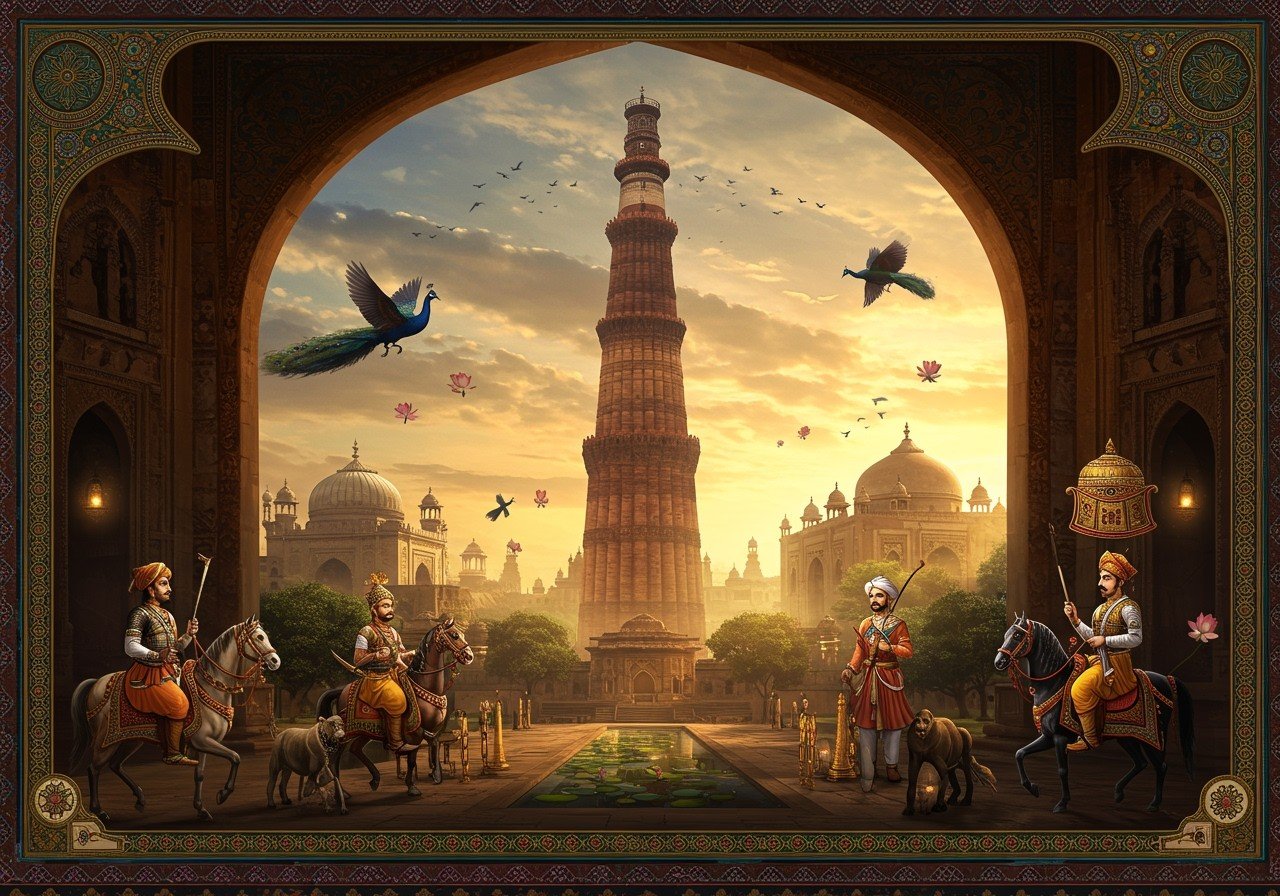
Medieval India holds a crucial place in the UPSC syllabus, acting as a bridge between ancient and modern Indian history. This era, spanning from the 8th to the 18th century, witnessed the rise and fall of numerous dynasties, significant cultural transformations, and notable socio-economic shifts. A strong grasp of Medieval India is essential for UPSC aspirants, enabling them to understand the complexities of India’s historical evolution.
Medieval India UPSC Syllabus
The Medieval India section of the UPSC syllabus encompasses the period from approximately the 8th to the 18th century. Key areas of focus include:
- Early Medieval Period (8th to 12th century): This period includes the rise of Rajput kingdoms, the emergence of regional powers, and the tripartite struggle between the Palas, Pratiharas, and Rashtrakutas for control of Kannauj. It also involves studying political and agrarian organization, the status of women, and social mobility.
- Delhi Sultanate (1206-1526): This section covers the establishment, expansion, and consolidation of the Delhi Sultanate, along with administrative and economic reforms introduced by rulers like Alauddin Khilji. It also explores the cultural contributions and religious circumstances of the time, including the influence of Islam and early Sufi thought.
- Vijayanagara and Bahmani Kingdoms: The rise, administration, and cultural achievements of these Southern kingdoms are key aspects of this topic. The Vijayanagara Empire’s sophisticated administrative structure and its patronage of art and literature are particularly important.
- Mughal Empire (1526-1707): This section details the foundation of the Mughal Empire, its expansion under rulers like Akbar, and the administrative and economic policies implemented. The cultural zenith during Shah Jahan’s reign, marked by architectural marvels like the Taj Mahal, is also a significant area of study.
- Maratha Empire: This topic explores the rise of the Marathas under Shivaji Maharaj, their administrative setup, and their conflicts with the Mughals and the British. Understanding their role in challenging established powers is crucial.
Medieval India UPSC Notes: Essential Areas to Cover
Comprehensive notes on Medieval India are vital for effective UPSC preparation. These notes should cover:
- Political History: This includes outlining key events, battles (like the First Battle of Panipat), and treaties that shaped Medieval India. Understanding the chronological order of these events is essential.
- Administrative Systems: Explaining governance models like the Mansabdari system under the Mughals and the administrative divisions of the Delhi Sultanate is vital. Comparing and contrasting different administrative structures is helpful.
- Socio-Economic Conditions: Discussing the agrarian economy, trade and commerce, the status of women, and the impact of foreign invasions on society are important aspects of this topic.
- Religious and Cultural Developments: Highlighting the Bhakti and Sufi movements, key figures like Sankaracharya, architectural advancements like temples and mosques, and the patronage of art, literature, and science are crucial. Understanding the interaction between different religious and cultural influences is key.
- Key Personalities: Providing insights into the lives and contributions of rulers like Akbar, Shivaji, and Alauddin Khilji, as well as religious figures and scholars, is essential.
Medieval India UPSC Previous Year Questions (PYQs)
Analyzing PYQs is vital for understanding exam patterns and important topics. Some notable PYQs include:
- Questions on administrative reforms of Alauddin Khilji and their impact on the Delhi Sultanate.
- The role and significance of the Bhakti and Sufi movements in shaping social and religious landscapes.
- Questions on the Mughal architectural style and the contributions of various emperors.
- Analysis of Akbar’s economic policies and their effect on the Mughal Empire.
- Evaluation of Shivaji’s military strategies and their effectiveness.
Study Strategies and Recommended Resources
Effective study strategies include chronological study, thematic analysis, using maps, comparative analysis, and regular revision. Recommended resources include NCERT books (especially ‘Themes in Indian History’), reference books like ‘Medieval India’ by Satish Chandra, online lectures, and UPSC coaching materials. Supplementing your studies with relevant products from Poojn.in, such as books on Indian history, religious texts, or traditional artifacts, can enhance your understanding and connection with the era.
Poojn.in: Enhancing Your UPSC Medieval India Studies
Poojn.in, India’s largest cultural goods and services store, offers a unique opportunity to enrich your UPSC Medieval India preparation. Explore our collection of religious books, traditional artifacts, and other cultural items that can provide a tangible connection to the historical period you are studying. Immerse yourself in the rich heritage of Medieval India with Poojn.in.


